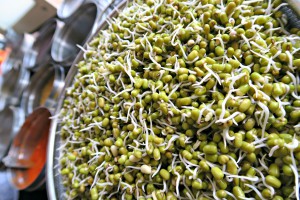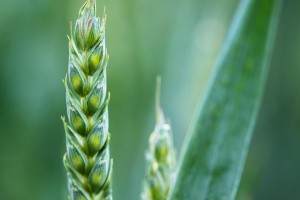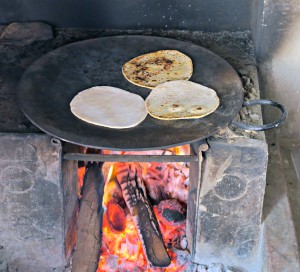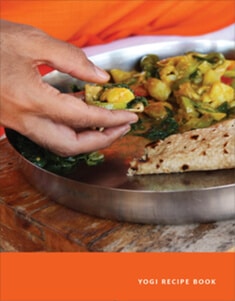
By Shreejan Sita
The appendix has been considered a vestigial organ in modern man. It had its uses for earlier man, before the evolution of homo sapiens. Then two years ago researchers discovered that it is actually a haven where good bacteria can commune until it’s safe to re-enter and re-populate the gut after a gastro-intestinal trauma such as diarrhea (or Delhi Belli as we like to call it in India – but not at the Ashram!)
Early humans’ diet was raw, mostly foliage and leaves. The process of digesting leaves requires a digesting enzyme, cellulose, which is absent in humans. But it is present in the bacteria which reside in our large intestine, which includes the appendix, thus making consumption of plants possible.
But the appendix of today is much smaller than in original humans because we are cooking our food, we are processing our grains, and we are exposed to far less bacteria in a world that focuses on clean drinking water and clean foods. We can no longer grab a hand full of unmilled wheat berries and grind them in our tiny jaws to produce anything soluble in the gut. We just aren’t that primitive anymore! Yay! Big brains and little appendix. Now what?
Listen to Granny Guru!

We know that humans have been eating grains for about 10,000 years. And we know that at least for thousands of years the traditional method of processing grains, beans, legumes, etc. was soaking and sprouting. Grains are the seeds of domesticated grasses, designed to propagate. The seed has multiple layers of protection so they can pass through the intestines of animals intact, and grow where the animals eliminates them.
A human’s digestive track is more acidic than, say, a cow or chicken. So we can break down the grains as it passes through. That’s not the good news! The process of digesting the grain releases its phytic acid into our gut, which binds with vitamins and minerals and prevents us from absorbing them. So manufacturers created a solution to refine the grains by removing the bran and germ. But this also removed the fiber, vitamins and minerals. So problem solving again ““ they bleached, brominated (texturized) and added synthetic supplements to take the place of what had been removed. All of this engineering has wreaked havoc on our poor liver.
And still, with all this modification, the grains are still too hard on our system. We don’t digest any grain completely. Undigested pieces stay in the intestinal walls, building up, and finally undermining our ability to properly digest other foods. And if this interference becomes too extreme, many disorders can arise including celiac disease and irritable bowel syndrome, to name a few.
Benefits of sprouting
Very slowly our societies are becoming aware of the ill effects of a refined carbohydrate-rich diet. Aside from the over hybridization of wheat (see very good book Wheat Belly by William Davis), our speedy lifestyle has encouraged us to bypass this very important
step in processing our food. Changing to a sprouted grain diet results in immediate improvements in energy, clear thinking, weight loss, and less swelling around the joints. Sprouting neutralizes the phytic acid and increases the nutrients available for digestion. The sprouted grain is much higher in protein, Niacin, B6, and vitamin C.
Keep your day job
Okay, so you can’t turn back the clock and chain yourself to the kitchen. You don’t need to. A home sprouting set up is easy, cheap, and reliable. Once you get the system down, you spend a few minutes each day rinsing seeds or transferring them to drying trays.And if that’s still too much of a commitment, you can purchase sprouted flour from your neighborhood health food shop. Keep it in the fridge and substitute it for any recipe calling for flour. We use it at the Ashram to make flat breads. Come for a visit and we will teach you our methods.
Finally! You can have your bread, and EAT it too!
Sources
Duke University Medical Center “Evolution of the Human Appendix: A Biological Remnant No More.” Science Daily, 21, Augsut 2009
Stay tuned for more nutritious Indian recipes in the new ashram publication, Yogi Recipe Book, coming soon!
At Shri Jasnath Ashram, guests can learn how to sprout and incorporate healthy grains in our diet in the ashram’s Bhojanshala (kitchen) next to chef Papu. The ashram is hosting a Yogic Lifestyle Workshop in January 1 ““ 10, 2018″¯ where participants can learn to cook balanced vegetarian meals, and other yogic lifestyle skills. To find out more information about the Lifestyle Workshop contact the ashram at info@shrijasnathasan.org
Shreejan Sita was born Sherry Minnard in Michigan, USA. She moved to India in 2013 to deepen her yoga practice, and is now a PhD candidate at SVYASA in Bangalore, as well as Director of Yoga Programs at Shri Jasnath Asan. Her food curiosity was born with the entrance of her middle daughter Avi into this world, already suffering with a variety of food allergies. In her pursuit to feed her daughter, she uncovered the nutritional foundations of vegetarian diet which finds itself in direct alignment with the ancient Ayurveda ways of India.




Leave A Comment